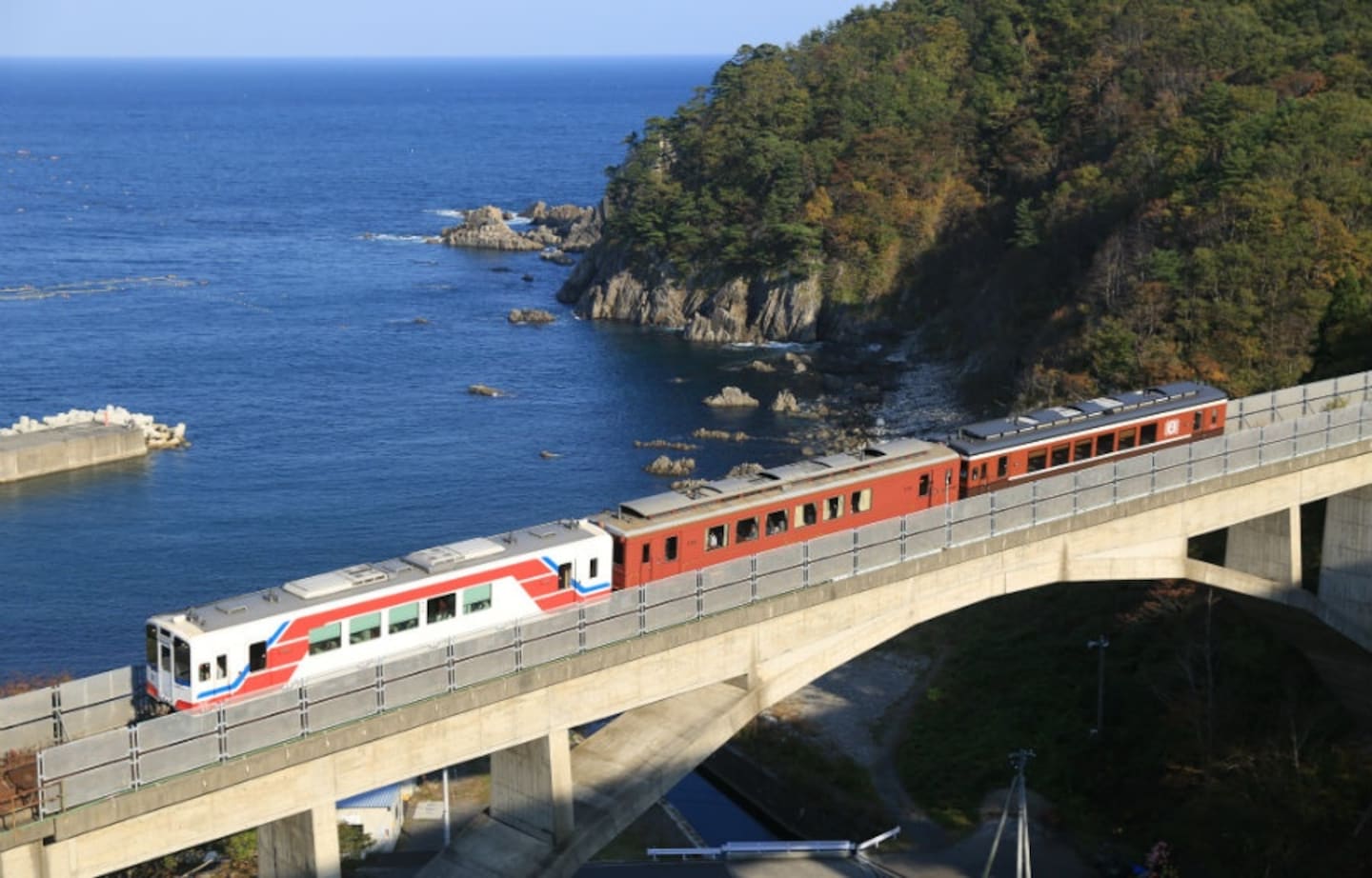Putting a Vital Railway Back on Track
The tsunami the Great East Japan Earthquake caused in March 2011 inflicted immense damage on the Sanriku Railway, a vital rail network that runs along the Sanriku Coast in Iwate Prefecture. The rail company restored service in surprisingly rapid fashion, however, and became an inspiring symbol for the catastrophe’s survivors.
By Highlighting Japanhttp://www.gov-online.go.jp/eng/publicity/book/hlj/html/201603/201603_04_en.html
Five years after the calamity, Sanriku Railway Co. President Masahiko Mochizuki outlined the railway’s anticipated track to the future, as well as its role in conveying the dangers of natural disasters and what countermeasures should be taken.

http://www.gov-online.go.jp/eng/publicity/book/hlj/html/201603/201603_04_en.html
Of the railway’s 107.6 kilometers of track—forming the North Rias and South Rias lines—the earthquake damaged 317 locations, destroying or sweeping away sections of rail tunnels, station buildings and bridges. Although the entire network was forced to suspend operations immediately after the quake, inspections and rebuilding began promptly, and despite breaks in sections of the line, service resumed where possible five days later; by the end of the month a 36.2-kilometer section was operating again.
In November 2011, the Japanese government sent ¥10.8 billion in aid to mend the other sections that had suffered immense damage. Within three years—on April 6, 2014—the entire Sanriku network had been restored to full service.
http://www.gov-online.go.jp/eng/publicity/book/hlj/html/201603/201603_04_en.html
“The main reason restoration went so quickly was that we set up a reconstruction plan in the month following the disaster, and every sector involved in the process worked with one another,” Mochizuki recalls. “The Sanriku Railway is a valuable resource in this region, since high school students with no other option for commuting must use it to get to school. We all worked quickly to be ready for the annual high school enrollment ceremonies in April.”
The company that originally constructed the railway referred to its original blueprints, and by incorporating the latest technology, all involved parties ensured that they swiftly built a superior railway at a lower cost for the younger residents. The results showed in the numbers: reconstruction costs totaled ¥9.1 billion—¥1 billion less than the ¥10.8 billion estimate.
http://www.gov-online.go.jp/eng/publicity/book/hlj/html/201603/201603_04_en.html
The Sanriku Railway restoration benefitted from overseas backing as well. The Kuwaiti government donated approximately ¥40 billion (equivalent to 5 million barrels of crude oil) to Japan to help in the reconstruction efforts, of which ¥9 billion was distributed to Iwate Prefecture. As the largest Sanriku Railway shareholder, Iwate Prefecture ensured that part of those funds was applied to the purchase of eight train cars and tasks such as the repair of station buildings.
“We inscribed a message on the new train cars written in Japanese, Arabic and English,” Mochizuki reports. “It says, ‘We greatly appreciate the support from the State of Kuwait.’ And we display the Kuwaiti national emblem on the front of the new cars as a symbol of how support from people around the world made this restoration possible.”
The Sanriku Railway also has an ongoing program called the “Disaster Education Train” that provides knowledge about the disaster. Railway staff work as guides on a reserved train car to present lessons on the circumstances of an earthquake or other disaster. Popular for student field trips, the program is also offered in English.
“Compared to before the disaster, we are seeing more foreign tourists, so we intend to increase English-language signage along the railroad lines and at train stations,”
Mochizuki states. "The railway was known mostly for providing school transportation, but the disaster cut usage by high school students in half. With little prospect of growing the resident population in this era, we decided, why not develop nonresident ridership? So we put our efforts into welcoming foreign tourists and developing character-related businesses.”




